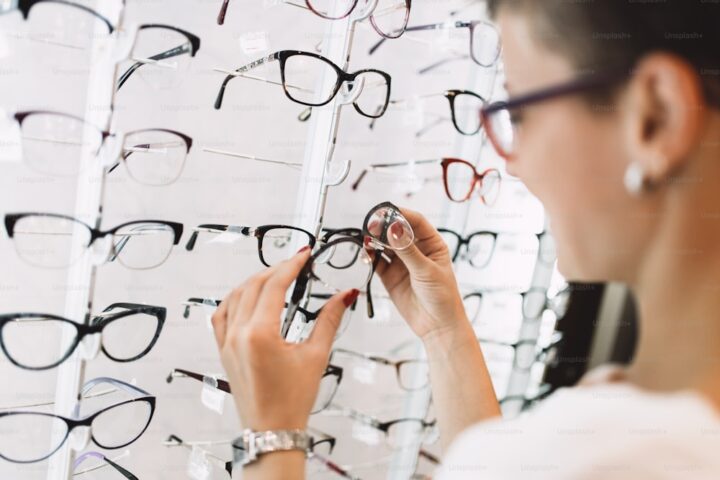What You Need to Know About Myopia
With an ever-increasing prevalence in today’s digital age, understanding myopia has never been more critical. This blog post aims to unravel the mysteries of myopia, shedding light on its causes, implications, and the latest advancements in treatment options. So, let’s embark on this eye-opening journey together, exploring the intricacies of myopia and how it impacts our daily lives.
Have you ever wondered what is myopia? Myopia is a refractive error wherein distant objects appear blurry while close objects remain clear. This occurs when the eyeball is too long or the cornea is too curved, causing light rays to focus in front of the retina instead of directly on it. As a result, images are focused in front of the retina, leading to blurred vision.

Causes of Myopia
While genetics play a significant role in myopia development, environmental factors also contribute. Excessive near work, such as reading or screen time, especially during childhood and adolescence, increases the risk of developing myopia. Additionally, insufficient outdoor exposure and a lack of natural light may exacerbate the condition.
Symptoms of Myopia
The most common symptom of myopia is difficulty seeing distant objects clearly while maintaining clear vision for close-up tasks. Other symptoms may include eye strain, headaches, squinting, and fatigue, particularly after prolonged periods of reading or screen use. If you are experiencing these symptoms and you are in Texas, it’s important to consult with an eye doctor in Pasadena, TX, who can provide a comprehensive eye exam and recommend the best treatment options to improve your vision and comfort.
Impact on Daily Life
Myopia can significantly impact various aspects of daily life, including academic performance, work productivity, and participation in recreational activities. Individuals with uncorrected myopia may struggle to see classroom or presentation materials, experience challenges driving, or face limitations in sports and outdoor activities.
Diagnosis
An eye examination by an optometrist or ophthalmologist is necessary to diagnose myopia accurately. The evaluation typically includes visual acuity testing, refraction assessment, and examination of the eye’s structures to rule out other potential eye conditions. After diagnosis has been carried out, the specialist may recommend a number of different treatment options, varying in budget and effectiveness. Even within a treatment method like laser eye surgery, there are a number of types of laser eye surgery with each one having it’s own merits depending on the patient.
Treatment Options
Several treatment options are available to manage myopia and correct vision:
- Prescription Eyeglasses or Contact Lenses: Eyeglasses or contact lenses with concave lenses are commonly prescribed to correct myopia by bending light rays before they enter the eye, allowing images to focus correctly on the retina.
- Orthokeratology (Ortho-K): This non-surgical procedure involves wearing rigid contact lenses overnight to reshape the cornea temporarily. Ortho-K lenses are removed upon waking, providing clear vision throughout the day without the need for glasses or contacts.
- Refractive Surgery: Procedures such as LASIK (Laser-Assisted In Situ Keratomileusis) and PRK (Photorefractive Keratectomy) reshape the cornea to correct refractive errors, including myopia. These surgeries offer long-term vision correction but require careful consideration and evaluation by an eye care professional.
- Atropine Eye Drops: Low-dose atropine eye drops have shown promise in slowing the progression of myopia in children. By dilating the pupil and temporarily relaxing the eye’s focusing mechanism, atropine eye drops help reduce eye strain and may prevent further elongation of the eyeball.
Prevention Strategies
While myopia may have a genetic component, certain preventive measures can help reduce the risk of its onset or progression:
- Encourage Outdoor Activities: Spending time outdoors, especially during childhood, has been associated with a lower risk of myopia development. Exposure to natural light may help regulate eye growth and reduce the likelihood of developing nearsightedness.
- Practice Visual Hygiene: Implementing good visual habits, such as taking regular breaks during near work, maintaining proper lighting conditions, and ensuring ergonomic workstation setups, can help alleviate eye strain and reduce the risk of myopia progression.
Conclusion
Myopia is a common refractive error that affects individuals of all ages worldwide. Understanding its causes, symptoms, and treatment options is essential for maintaining optimal eye health and quality of life.
By promoting awareness, adopting preventive measures, and seeking appropriate treatment, individuals can effectively manage myopia and enjoy clear vision for years to come. Remember, regular eye examinations and consultations with eye care professionals are key to preserving healthy vision and addressing any underlying eye conditions promptly.


